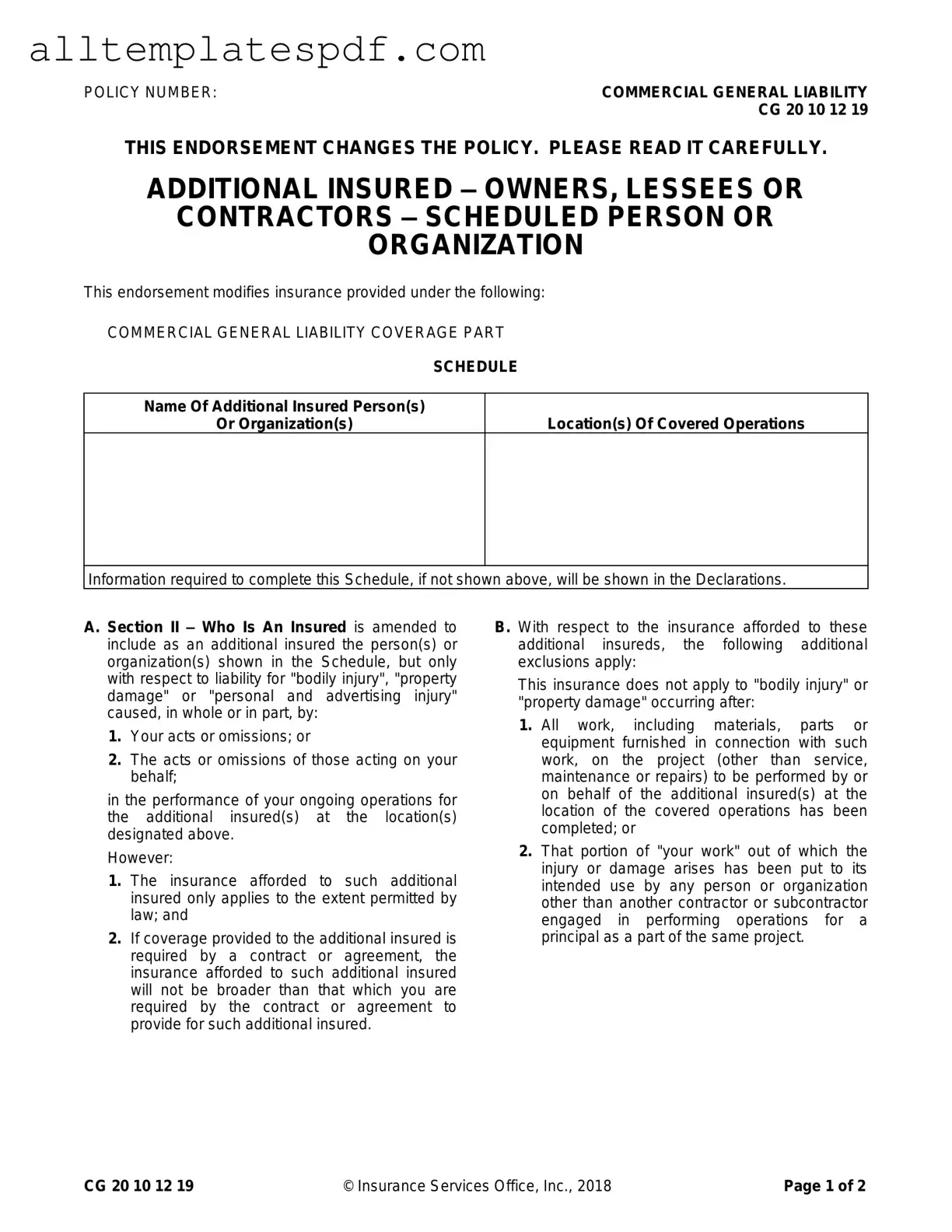Filling out the CG 20 10 07 04 Liability Endorsement form can be straightforward, but several common mistakes can lead to complications. One frequent error is failing to accurately list the name of the additional insured. It's crucial to ensure that the names are spelled correctly and match the legal names of the individuals or organizations. Omitting a name or including incorrect details can create issues with coverage and liability.
Another common mistake involves neglecting to specify the location of covered operations. This section is essential because it defines where the coverage applies. If the location is not clearly stated, it can result in confusion or disputes later on. Always double-check that the address or location details are complete and precise.
People often overlook the importance of understanding the scope of coverage provided by this endorsement. The form specifies that the coverage only applies to liability arising from your acts or omissions or those acting on your behalf. Misinterpreting this can lead to assumptions about broader coverage than what is actually provided, which may not protect you as intended.
In addition, many individuals forget to review the contractual obligations related to additional insured coverage. If the coverage is required by a contract, it must not exceed what is stipulated in that contract. Failing to align the coverage with contractual requirements can result in inadequate protection and potential financial loss.
Another mistake is not paying attention to the exclusions listed in the endorsement. The form specifies certain exclusions, such as injuries or damages occurring after all work has been completed. Ignoring these exclusions can lead to misunderstandings about what is covered and what is not, potentially leaving you unprotected in critical situations.
Lastly, individuals often miscalculate the limits of insurance applicable to additional insureds. The endorsement states that the maximum amount payable is either the limit required by the contract or the available limits of insurance, whichever is less. Misunderstanding this can lead to inadequate coverage, which could be detrimental in the event of a claim.
